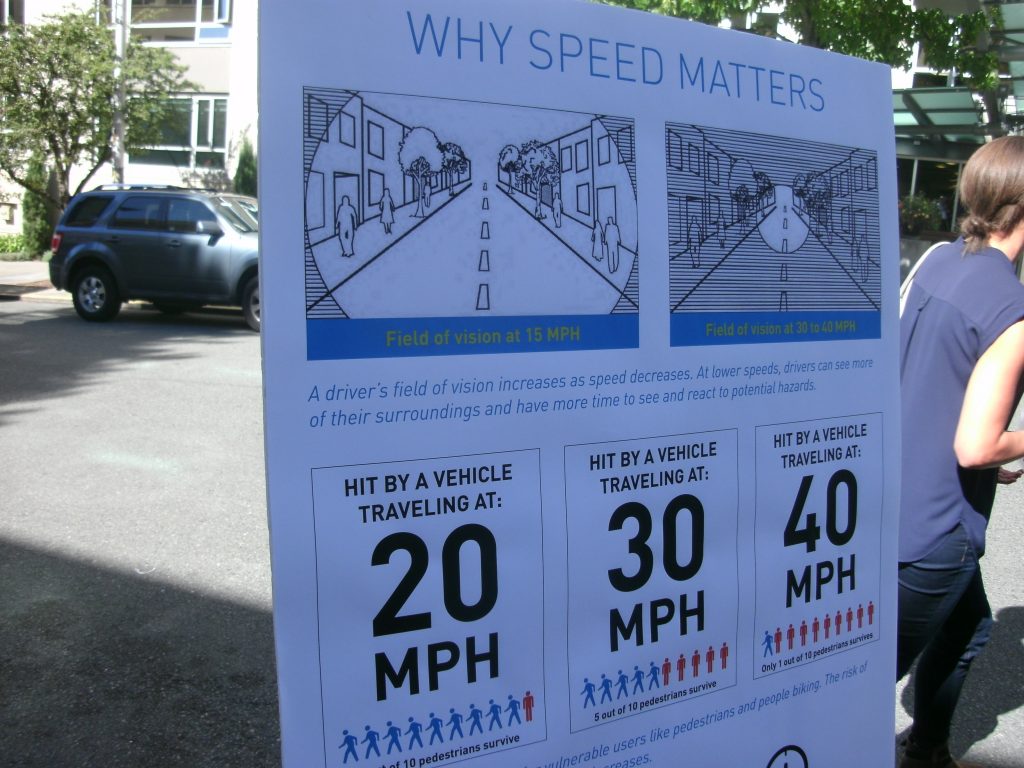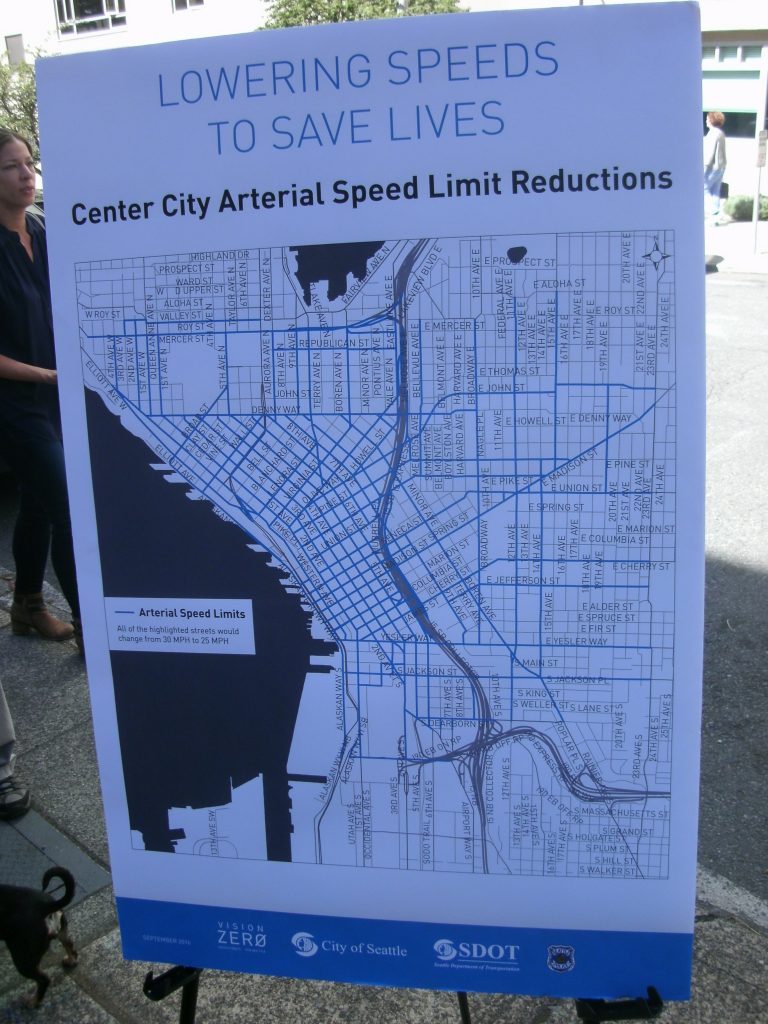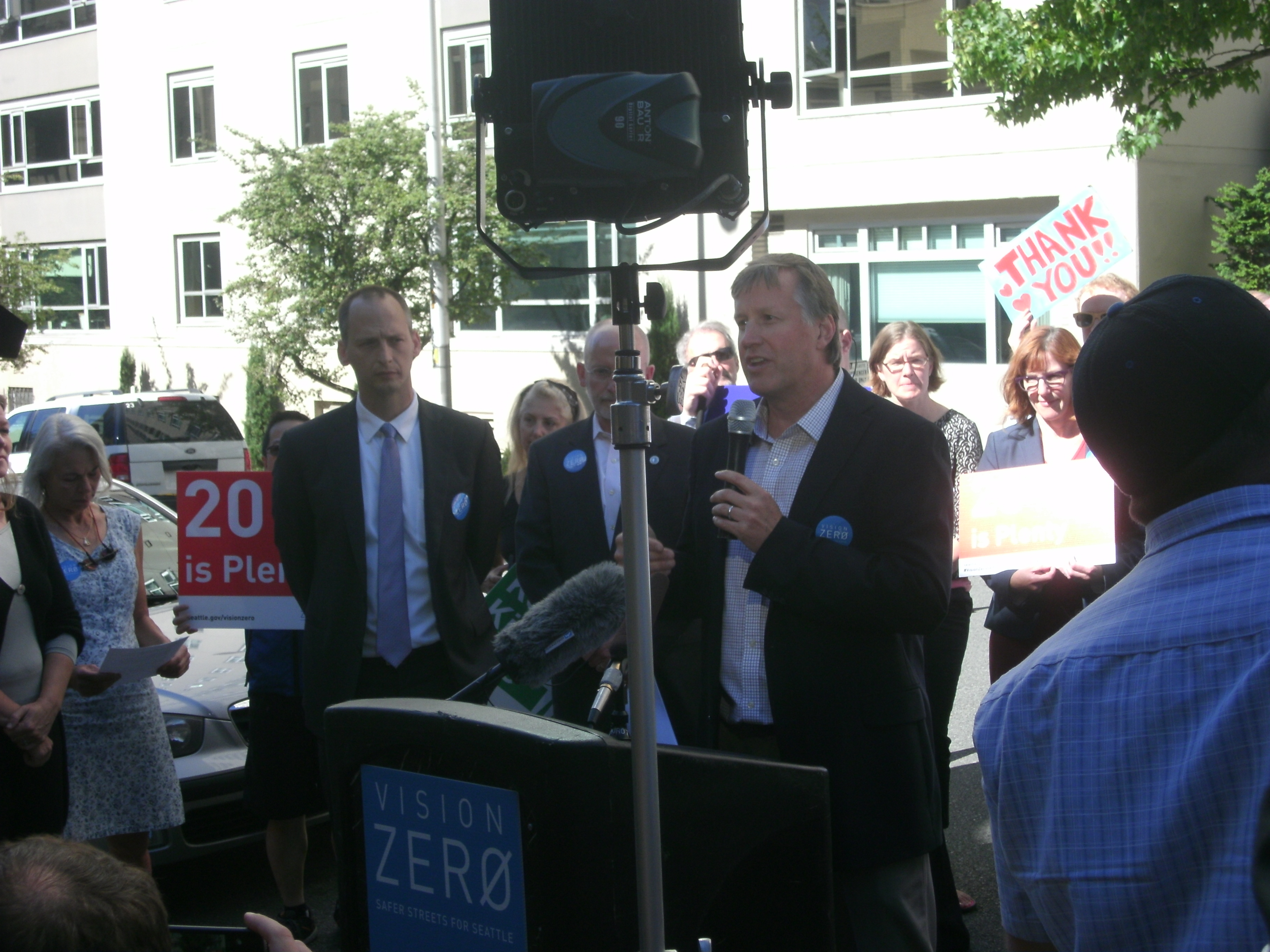At a Tuesday press conference at Horizon House on First Hill, Seattle City Councilmembers Tim Burgess and Mike O’Brien announced a proposal to lower speed limits throughout much of the City of Seattle to limits currently found throughout every other city in King County.
Flanked by members of the safe streets advocacy community and introduced by the CEO of Horizon House, Sara McVey, the two councilmembers, who often disagree on issues while on the dais, both spoke of the proposal as a common sense change that can help reduce deaths and serious injuries on our streets.
The proposal will do two primary things:
- First, it will lower the unsigned speed limit on all non-arterial neighborhood streets throughout the city to the same level that it currently is only in school zones: 20 mph.
- Second, it will lower the speed limits on center city streets from 30 mph to 25 mph.

This is a large move for the City to make on behalf of Vision Zero, with its ambitious goal of reducing to zero traffic-related deaths and serious injuries by 2030. Previous moves that the Seattle Department of Transportation (SDOT) has made in pursuit of this goal include the restriction of right turns on red on some problem intersections in Downtown, as well as highly visible distracted driving and anti-DUI campaigns that focus on the personal responsibility aspect of traffic safety. But speed is a huge factor in traffic injuries and their severity. Pedestrians are half as likely to survive a collision at 30 mph than they are at 20 mph.
SDOT Director Scott Kubly followed the legislators by getting into the specifics of how this change will work, explaining that improvements to slow traffic through engineering are driven by the relationship between the observed speed of traffic and the posted speed limits. With lower speed limits, SDOT will be more free to implement physical changes to the streets, like traffic circles, speed humps, or maybe even diverters for traffic.

In other words, speed limit signs do not automatically make drivers slow down, and the speed limits that are being proposed here are pretty similar to what drivers are currently doing. But this is the first step in being able to more quickly reengineer our streets to get to that Vision Zero number.
The proposal is a huge win for Seattle Neighborhood Greenways, which had made the “twenty is plenty” campaign one of its signature safe street advocacy issues for 2016.
This proposal will be introduced on September 20th into the Mike O’Brien-chaired Sustainability and Transportation Committee. O’Brien said he expected widespread support for this change from the Council.
Ryan Packer has been writing for The Urbanist since 2015, and currently reports full-time as Contributing Editor. Their beats are transportation, land use, public space, traffic safety, and obscure community meetings. Packer has also reported for other regional outlets including BikePortland, Seattle Met, and PubliCola. They live in the Capitol Hill neighborhood of Seattle.


